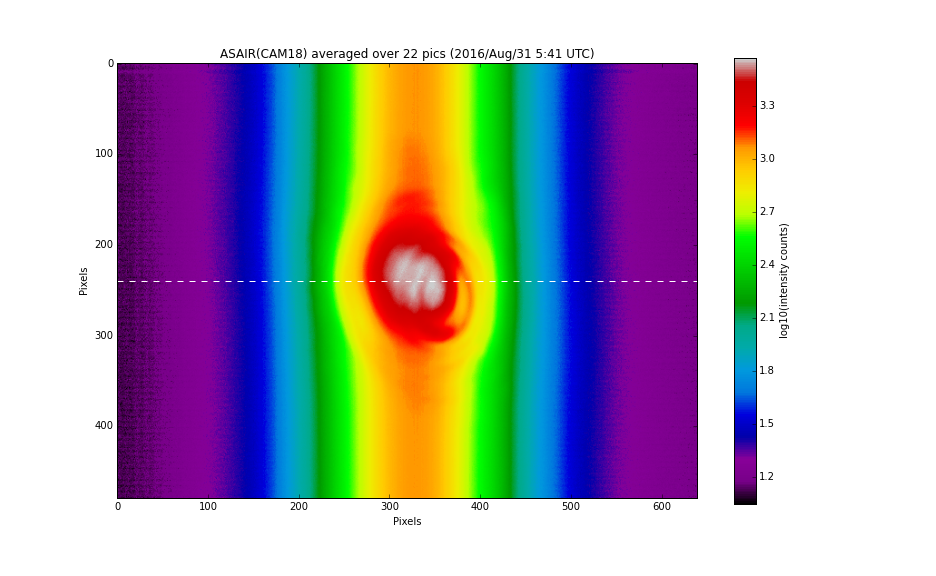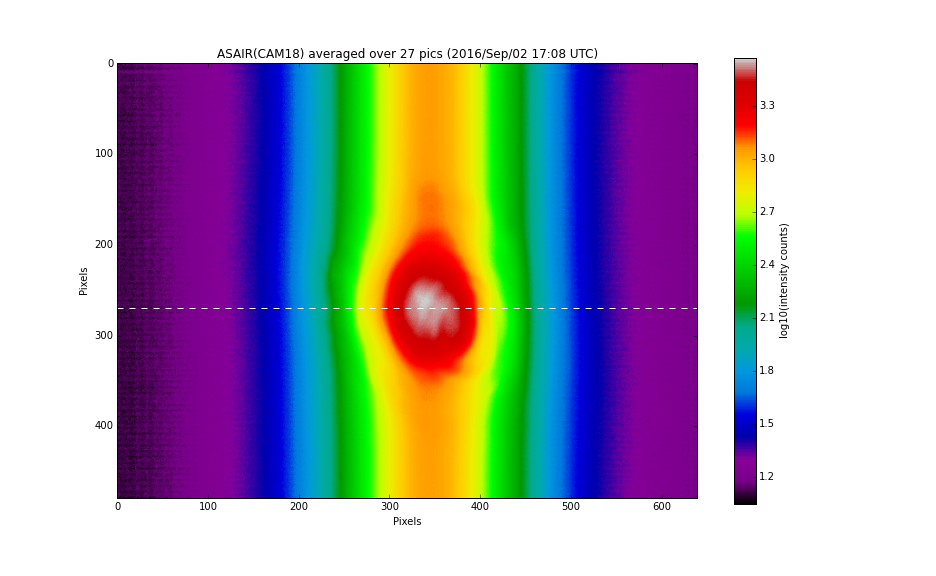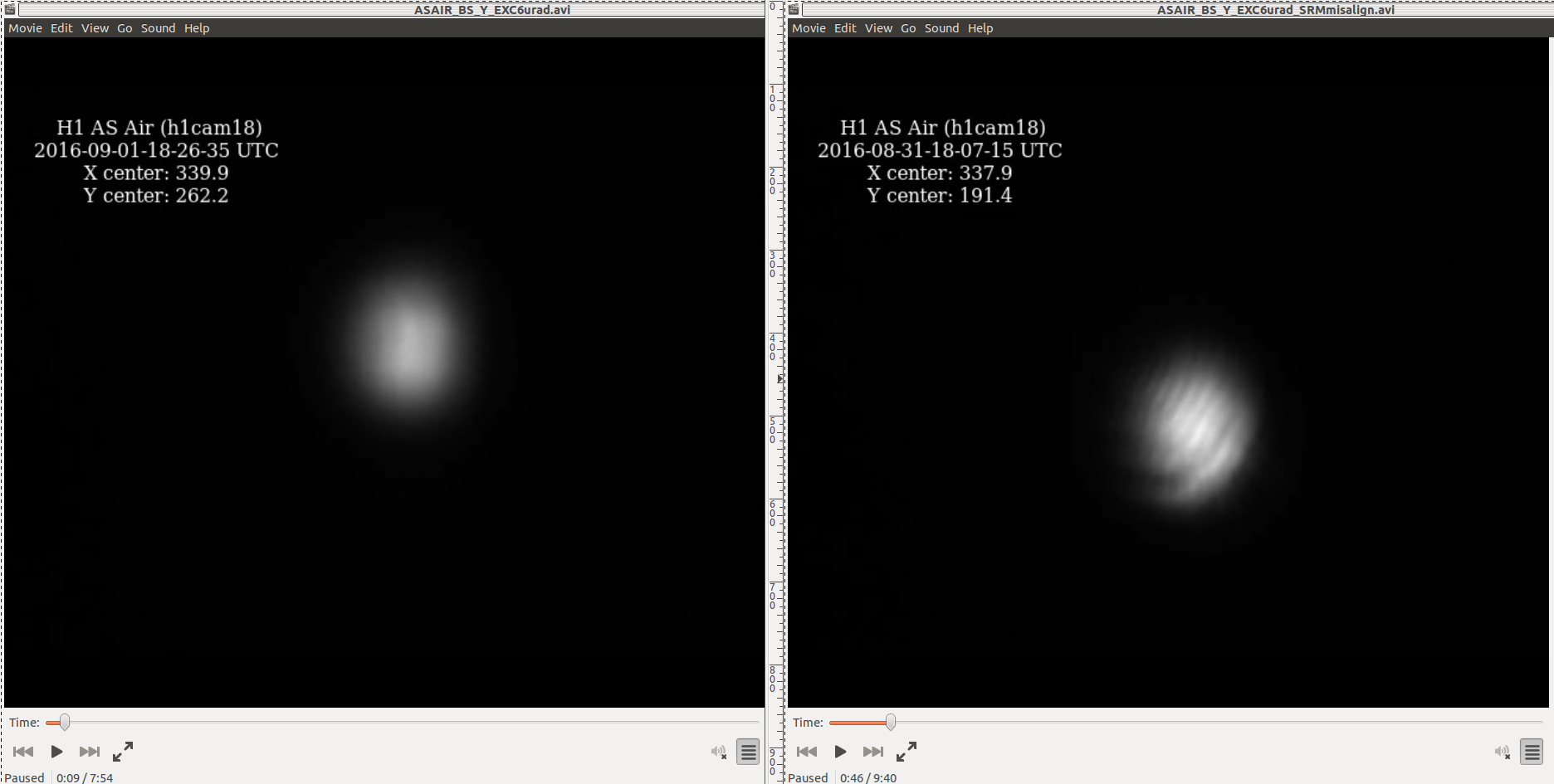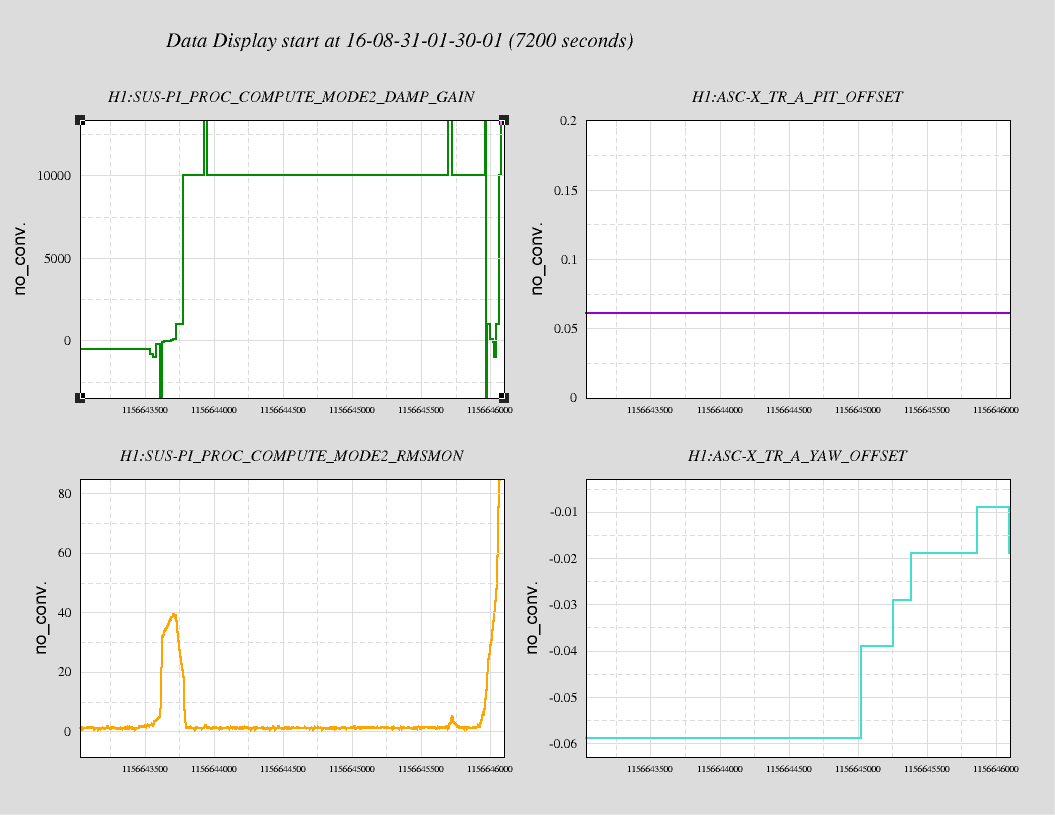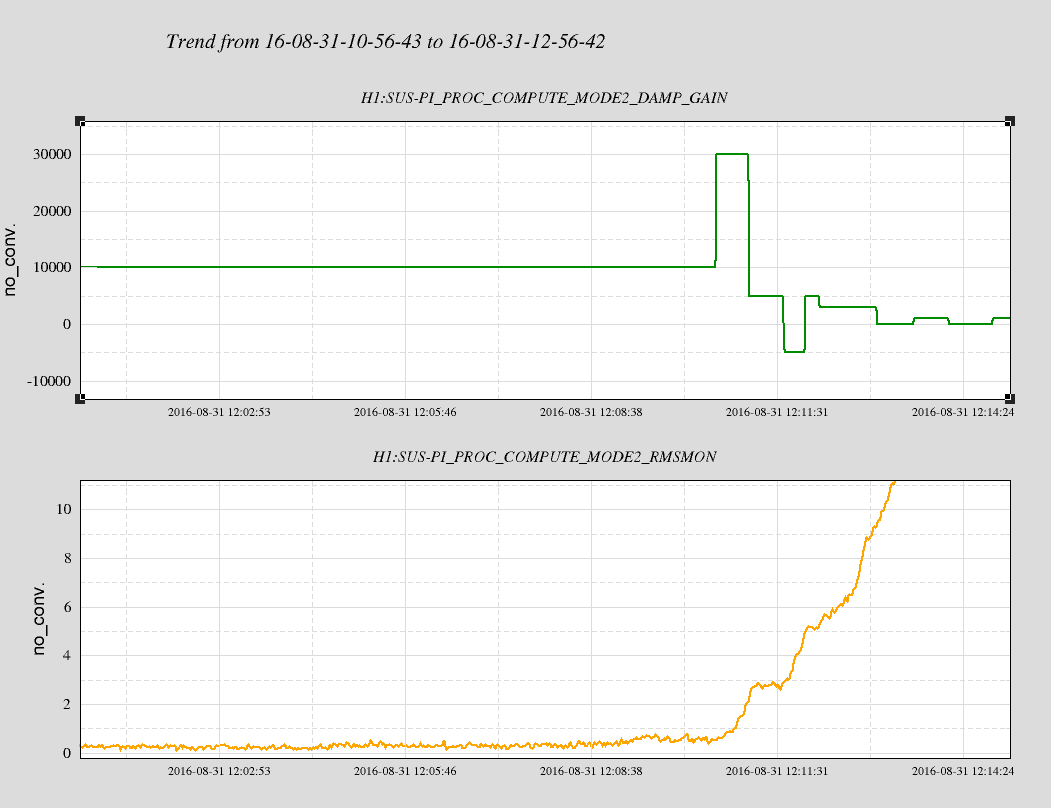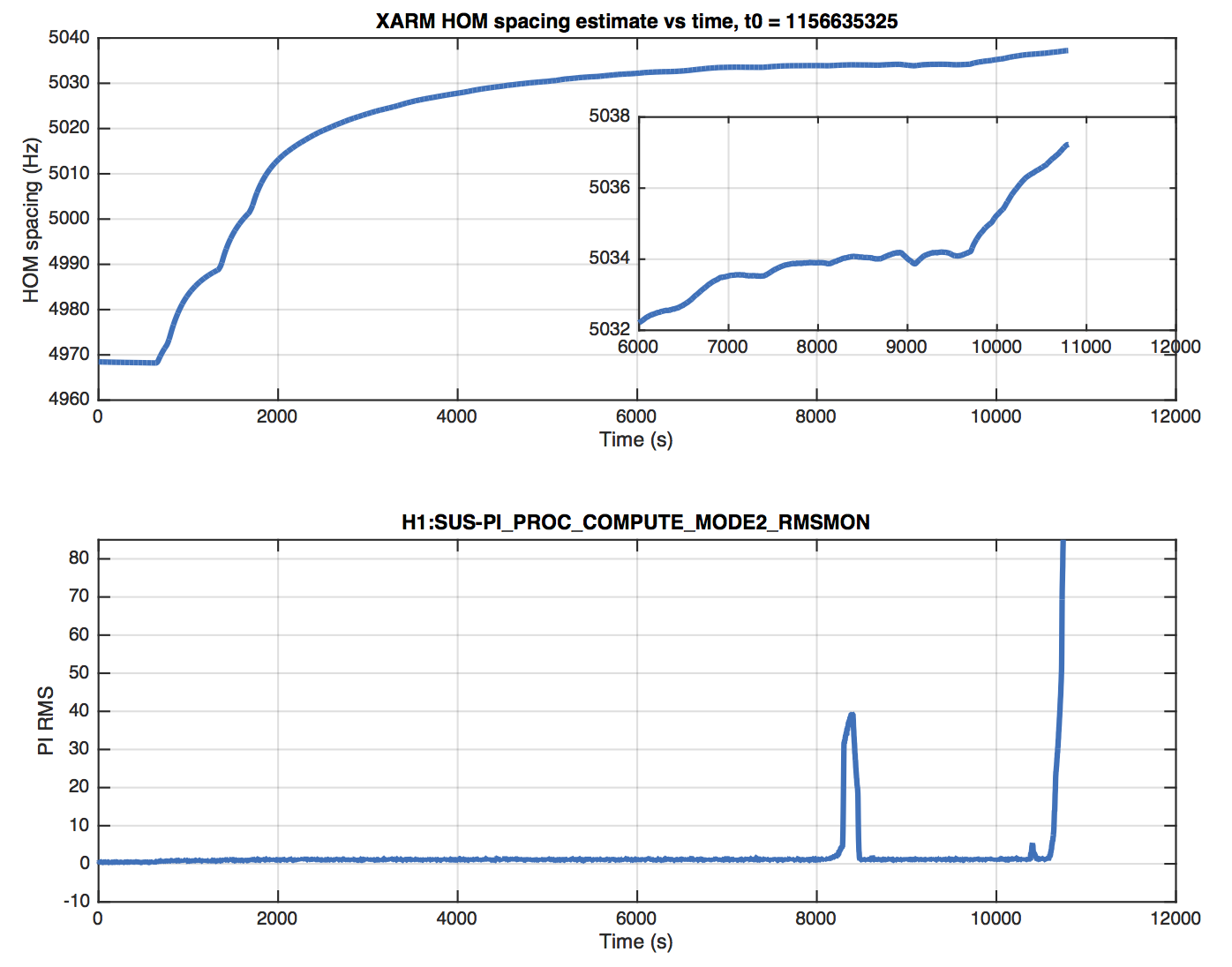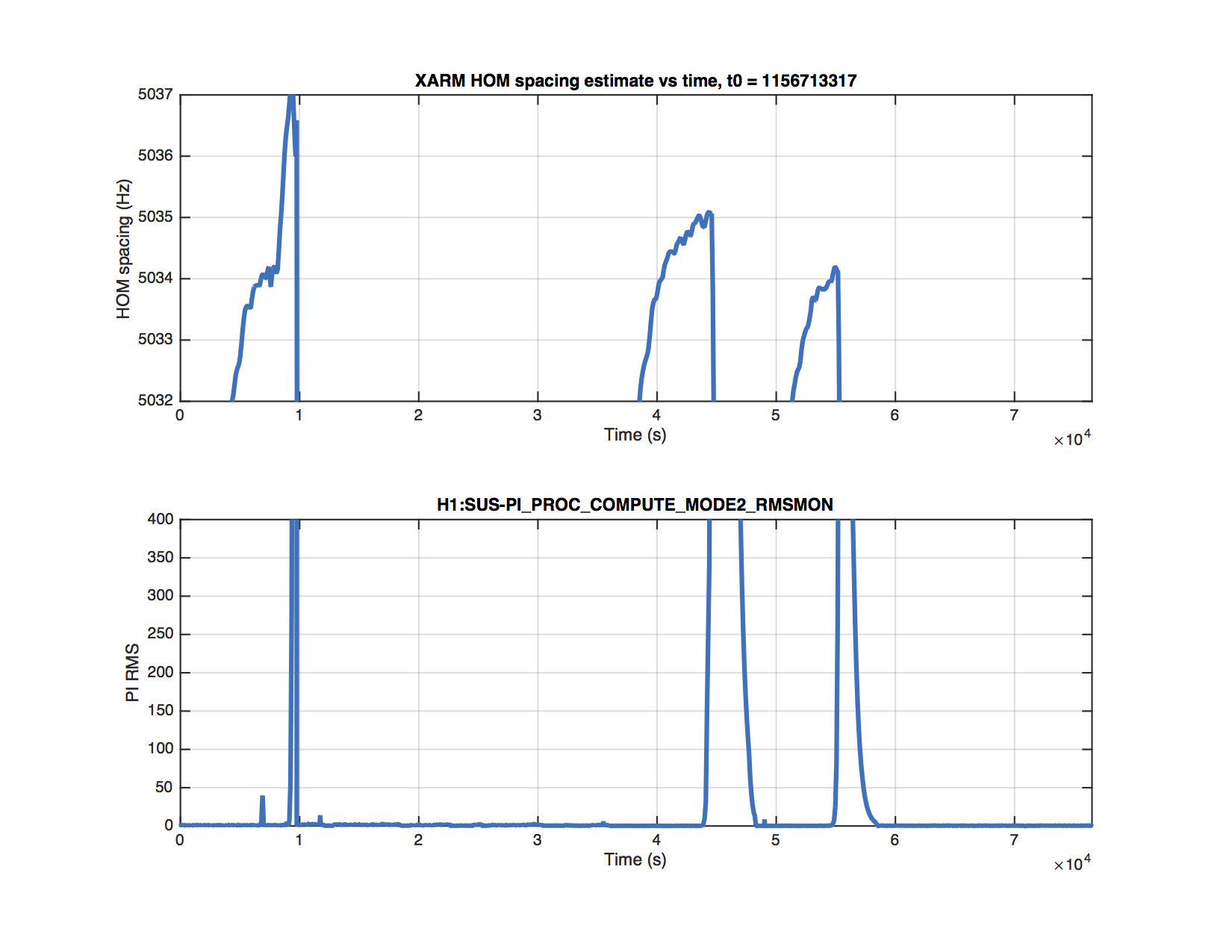I've been looking at the changes in H1 alignment during O1 (13 August 2015 to 5 January 2016) and after O1 (post O1, 5 January 2016 to 27 August 2016).
The chart below shows changes in MC1 alignment drives and OSEM readbacks for pitch and yaw for both time periods.
During O1, MC1 OSEMs change by 33urad and 52urad, pitch and yaw, while the alignment drives change 12urad and 24urad, pitch and yaw.
Post O1, MC1 OSEMs change by 10urad* and 25urad, pitch and yaw, while the alignment drives change 82urad and 46urad, pitch and yaw.
| O1 | post O1 | |
| MC1 alignment drive - delta PITCH | 12urad | 82urad |
| MC1 OSEM readback - delta PITCH | 33urad | 10urad* |
| MC1 alignment drive - delta YAW | 24urad | 46urad |
| MC1 OSEM readback - delta YAW | 52urad | 25urad |
* MC1 OSEM readback for post O1 max - min = 95urad
I'm using MC1 as the measure of the PSL beam pointing, since MC1 is servo'd to center the beam on MC2.
However, the MC1 signal also contains information about the relative positions of HAM2 and HAM3.
HAM3 oplev shows essentially no change in position.
HAM2 oplev shows -26urad change in pitch, and -10urad change in yaw for 45 of the 145 days.
HAM2 oplev yaw was railled at -39 until November, an then shows a real signal. Using the 45 days of good data, and applying the change to during that time to the 145 days of O1, the change in HAM2 yaw is -29urad.
Combining MC1 alignment changes and HAM2 alignment changes (measured and calculated):
| MC1 O1 change in pitch | +33urad |
| HAM2 O1 change in pitch | -26urad |
| total change in pitch | +7urad |
| MC1 O1 change in yaw | +52urad |
| HAM2 O1 change in yaw | -29urad |
| total change in yaw | +33urad |
This suggests the input pointing of the PSL beam changed by +7urad in pitch and +33urad in yaw during O1.















